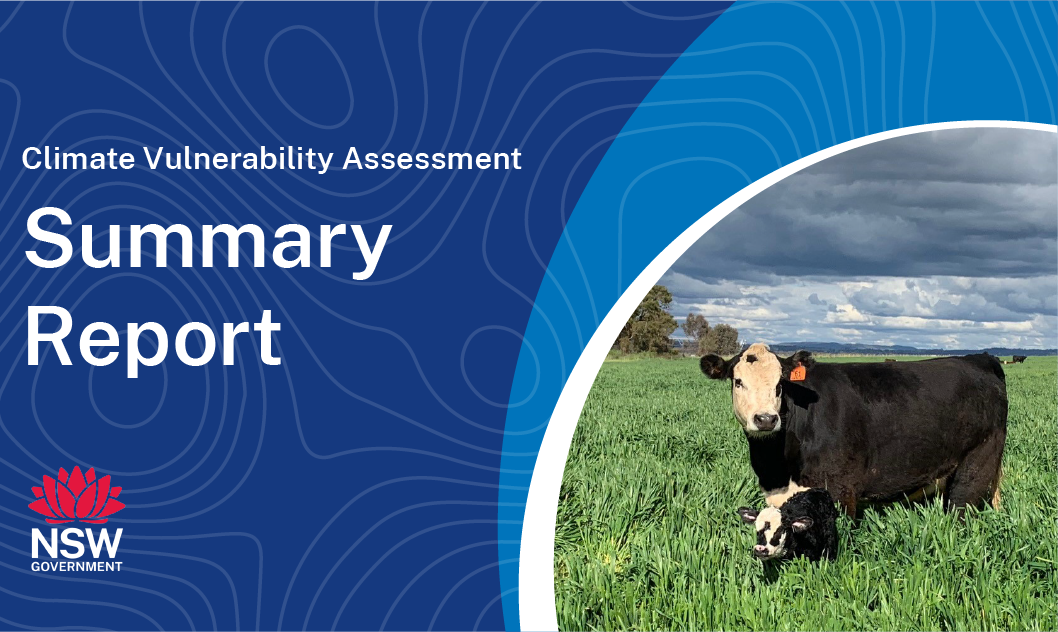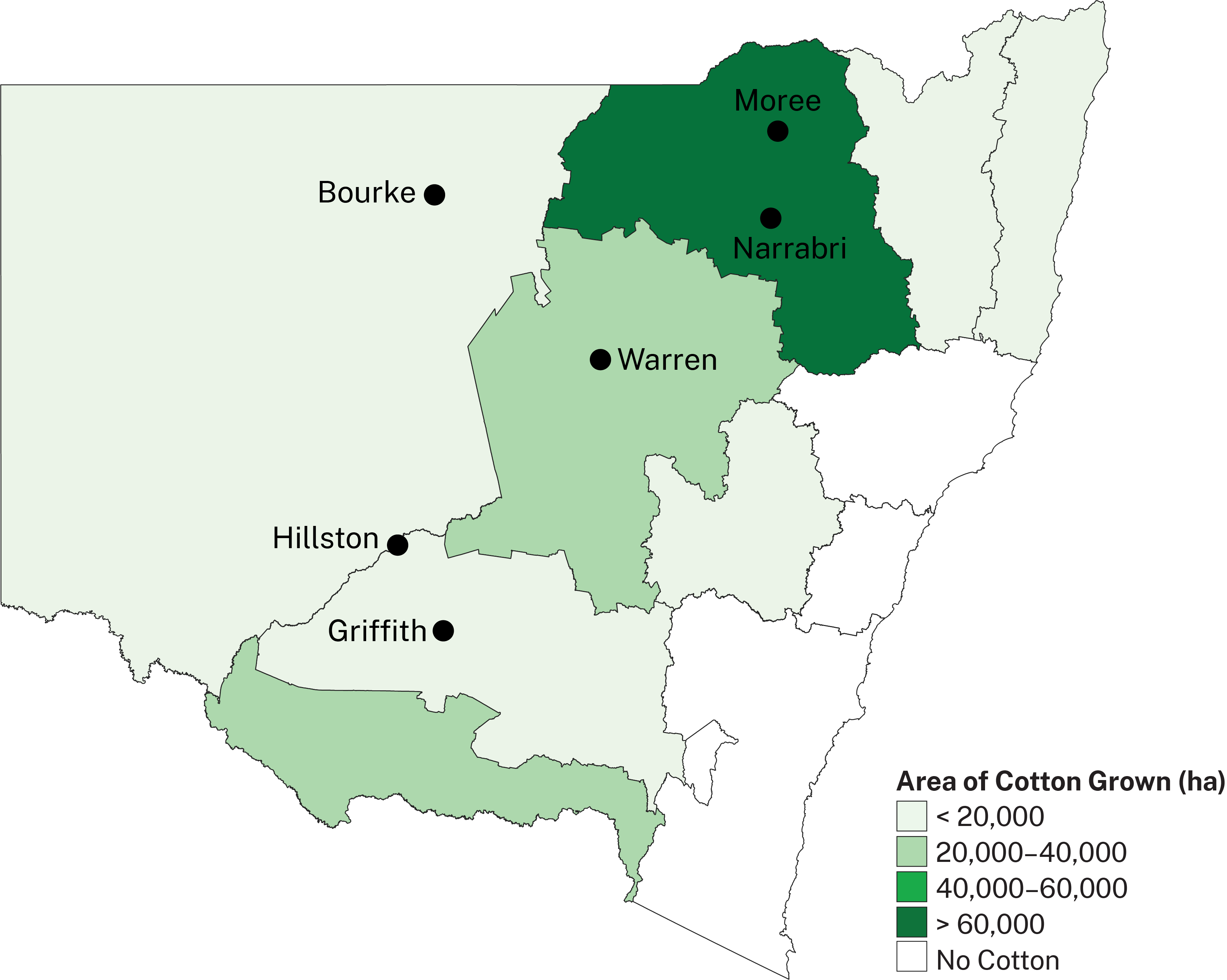What is the NSW DPIRD Climate Vulnerability Assessment? ⏷
Climate change is altering the growing conditions for many agricultural commodities across NSW. Primary producers need evidence-based information about the changing climate, and the risks and opportunities it may bring.
The NSW DPIRD Climate Vulnerability Assessments are enhancing the resilience of our primary industries by providing information and data to help the sector better plan for, and respond to, climate change. They have assessed climate change impacts for extensive livestock, broadacre and irrigated cropping, marine fisheries, forestry, horticulture and viticulture, and important biosecurity risks associated with these industries to inform sound planning, risk management and adaptation decisions.
How we assessed climate suitability ⏷
Climate projections were sourced from Climate Change in Australia’s ‘Application Ready Data’. This dataset is comprised of projections from an ensemble of 8 global climate models, each presenting a plausible future climate. The models differ in their projections, giving rise to uncertainty which is reflected in the confidence statements given in brackets. Care should be taken when interpreting these results.
The Climate Vulnerability Assessment is intended to highlight potential industry- or regional-level changes. Intermediate and high emissions scenarios were used in the assessments (RCP4.5 and RCP8.5), but these are not the only future scenarios possible. The inclusion of climate variables important to the commodities production was based on published research, expert knowledge and data quality and availability.
Learn more in the Climate Vulnerability Assessment Project Framework.
Climate impacts: what to expect
NSW irrigated cotton growing regions are expected to maintain moderate to very high climate suitability for irrigated cotton production by 2050 under both emissions scenarios, with increased climate suitability expected in southern growing regions.
Irrigated cotton vulnerabilities
- Cotton irrigation water requirements are likely to rise under future climate scenarios.The increase is likely to be greatest under the higher emission scenario and in southern NSW (high confidence).
Irrigated cotton opportunities
- Higher temperatures are likely to shorten the establishment and vegetative phases by accelerating plant growth, allowing the plant to create more flowers during a longer reproductive phenophase (high confidence). The resulting increase in cotton yield could expand the area of cotton sown in the central and southern NSW growing regions, particularly under the high emissions scenario.
Adapting to the changing climate
Adapting to changing irrigation water requirements
- The irrigated cotton industry may need to be more efficient with water storage and water use by changing irrigation practices or adopting new technologies, particularly in the south, where changes in climate suitability and irrigation water requirements are likely to be greatest.
- Current management strategies and breeding programs aimed at reducing irrigation water use are likely to remain effective and could be used to offset increased plant water use under a warmer climate.
Where can I find the climate suitability maps?
Maps of historical and future climate suitability for commodities were produced to demonstrate where in the state a commodity is likely to thrive or else be limited by future climatic conditions. The maps are not provided on these webpages but can be found in the Climate Vulnerability Assessment Summary Report (PDF, 41425.92 KB).
Irrigated cotton Factsheet
(PDF, 8525.75 KB)

Summary Report
(PDF, 41425.92 KB)

 Cotton in NSW
Cotton in NSW